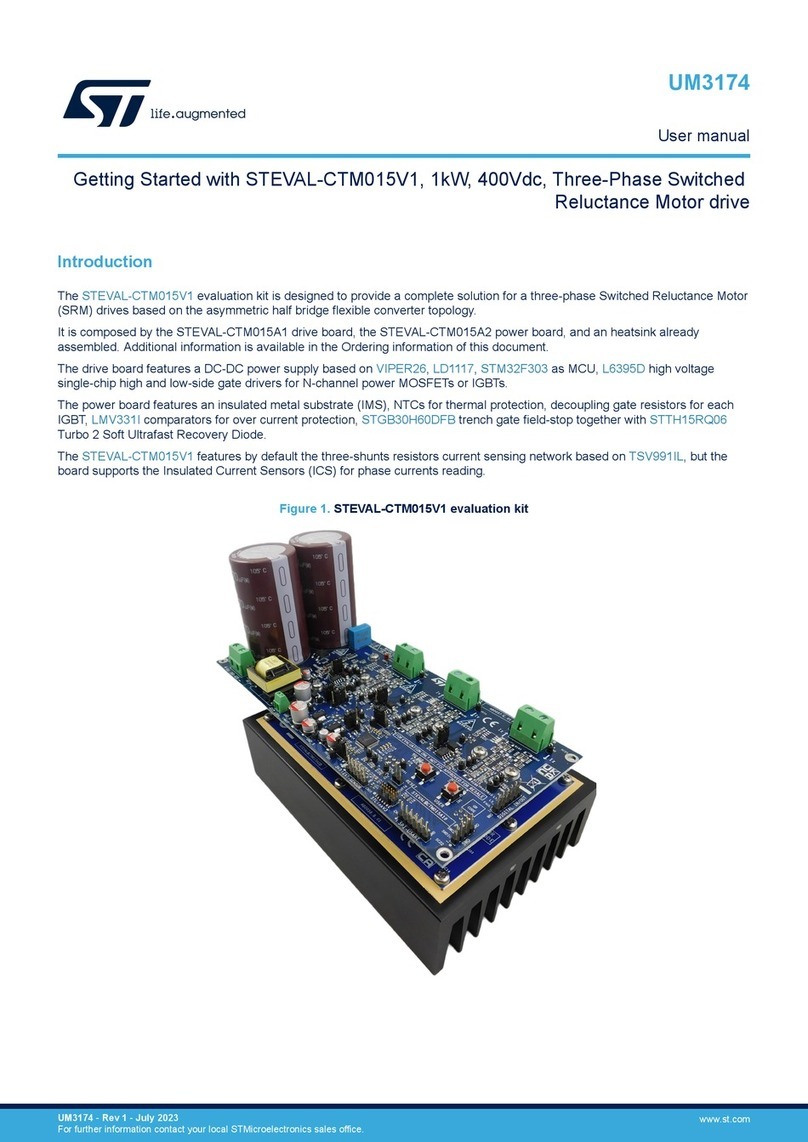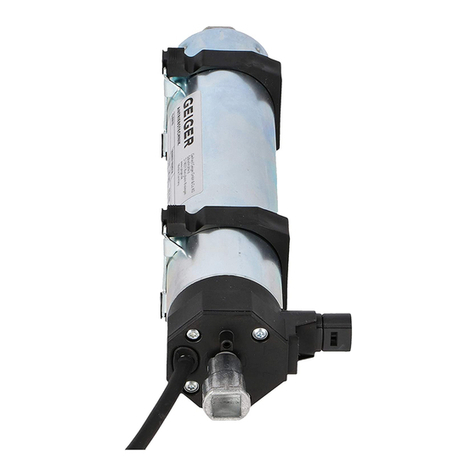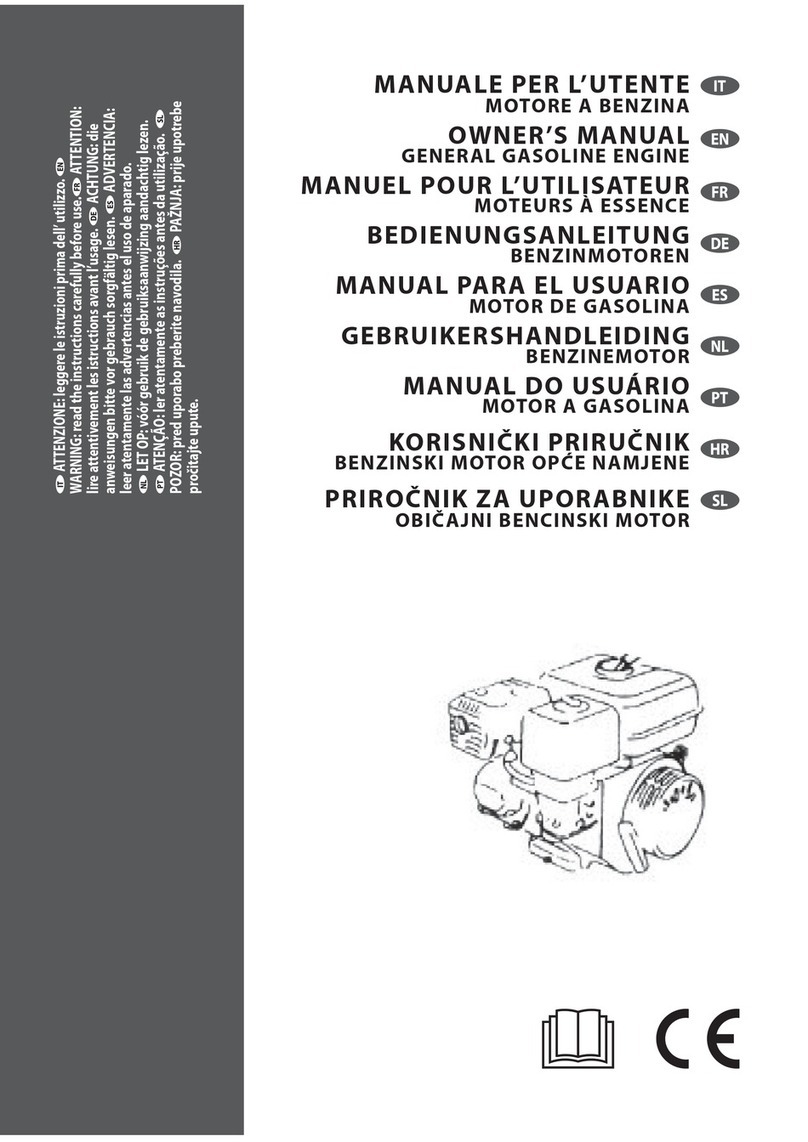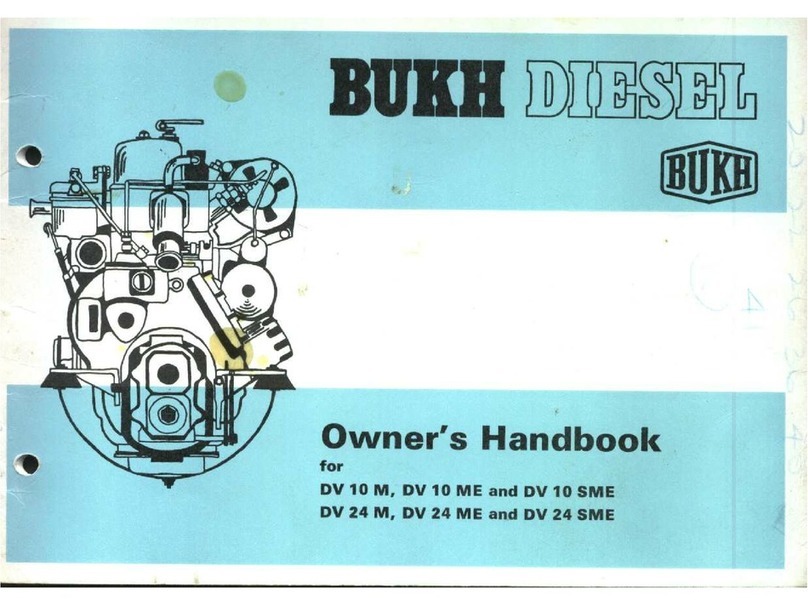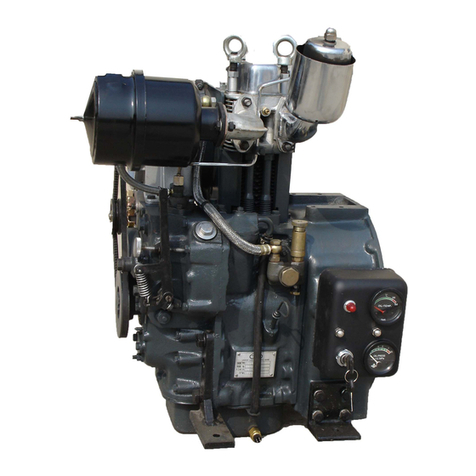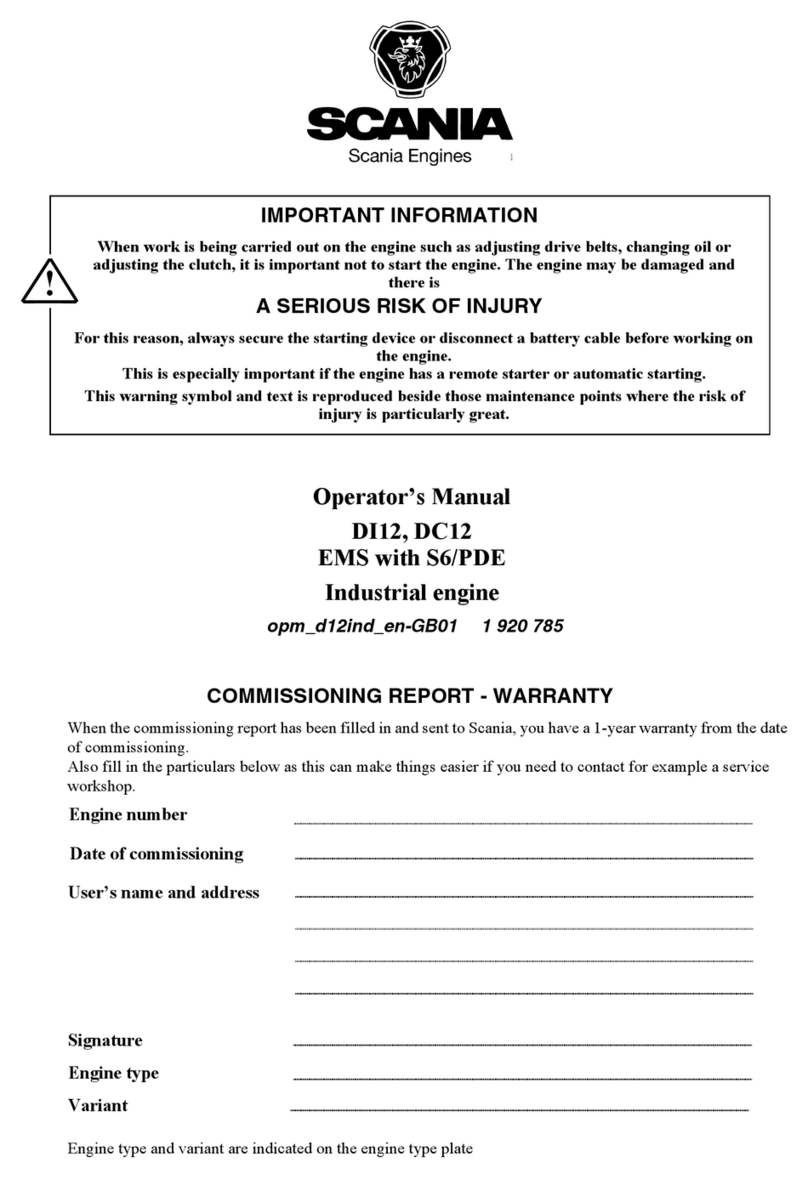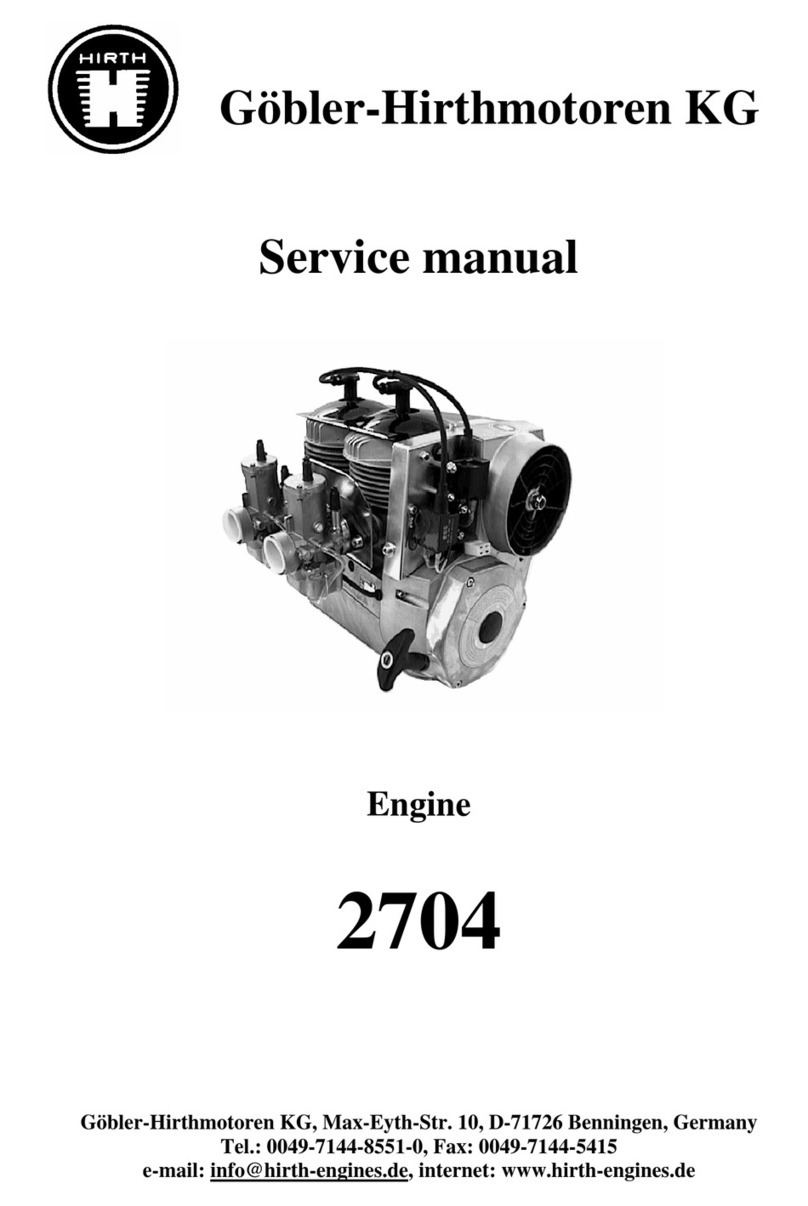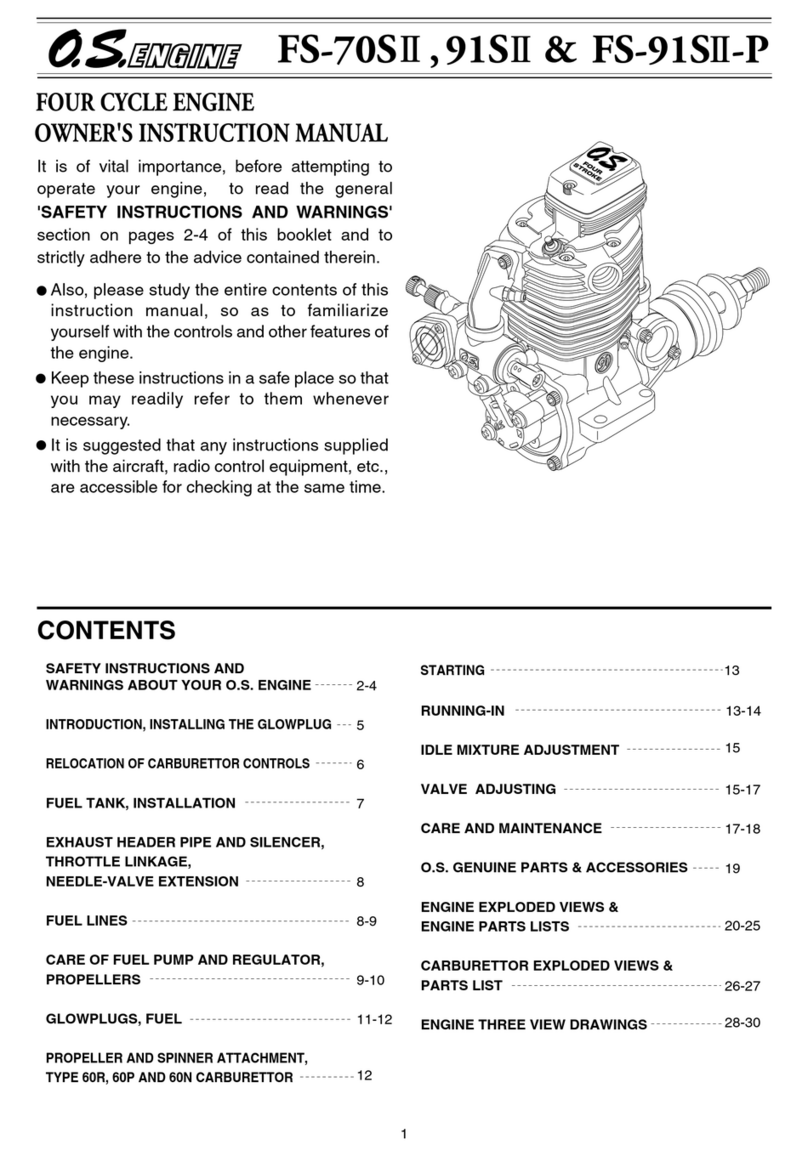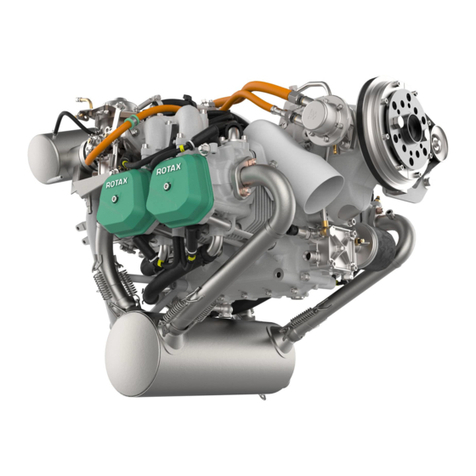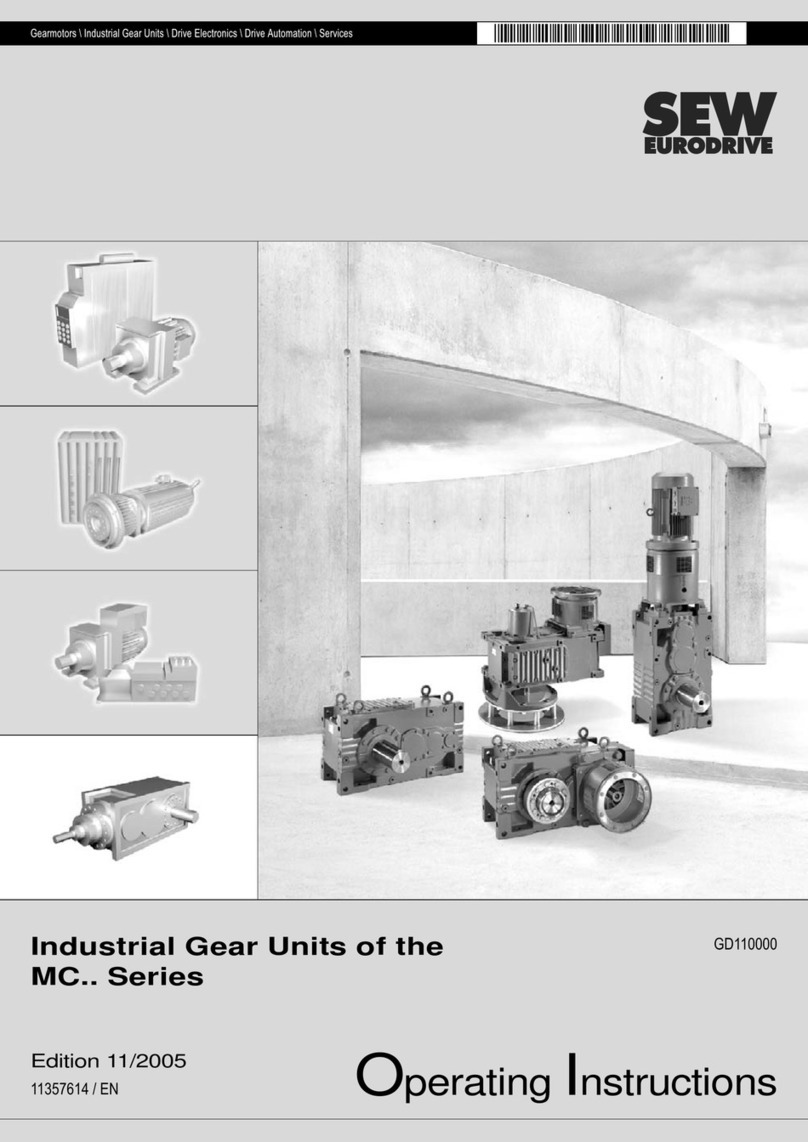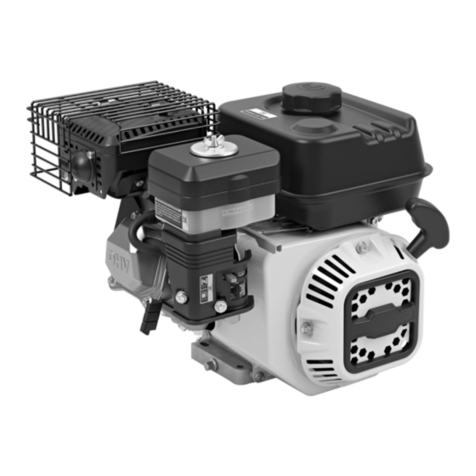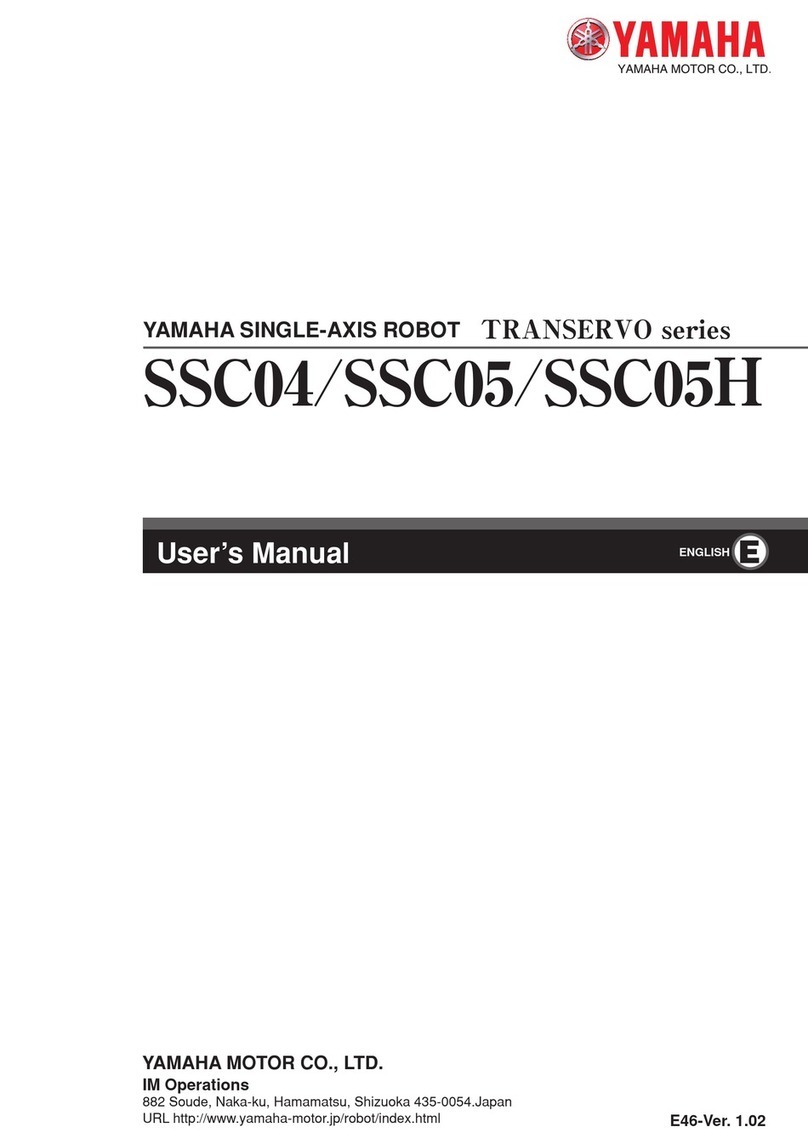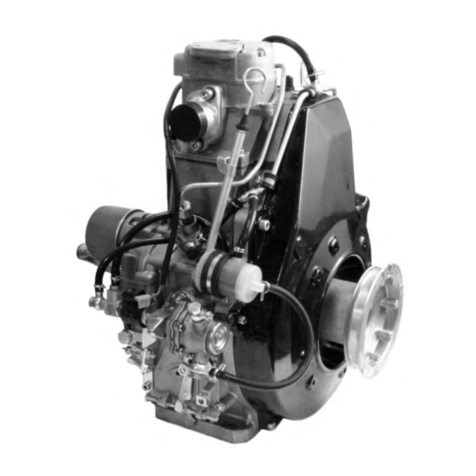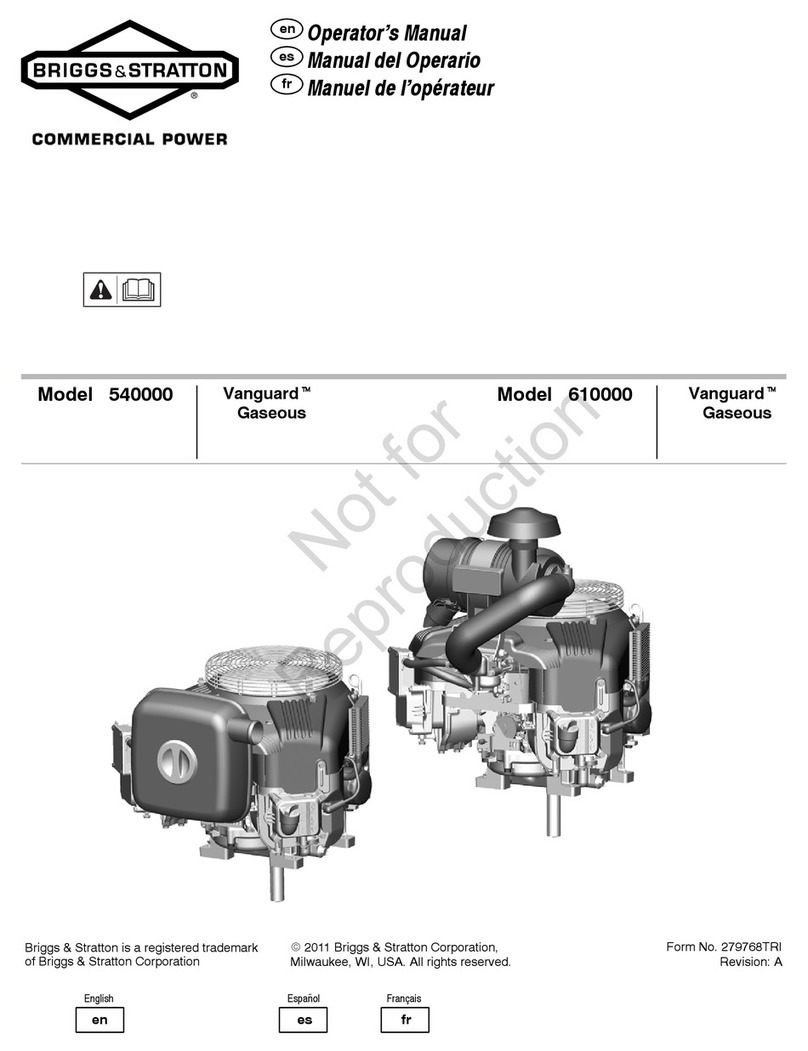seipee JM Series User manual

JM-GM-JMM
rev.00 P.1
JMM 56 ... 100 GM 160 ... 450
JM 56 ... 160
Avvertenze importanti: tutte le descrizioni e i dati riportati nel se-
guente manuale non sono impegnativi e ci riserviamo il diritto di modificali
senza darne preavviso. Per particolari informazioni tecniche si prega di
farne richiesta al nostro ufficio tecnico. La garanzia sul motore acquistato
viene automaticamente a decadere qualora il motore subisca lo smontaggio
e la sostituzione di parti.
Ricordiamo che i motori del presente manuale sono conformi alle se-
guenti Direttive Comunitarie:
-Direttiva “Bassa Tensione” 2006/95/CEE. I motori del presente ma-
nuale sono conformi alla direttiva e riportano in targa il marchio CE.
-Direttiva “Compatibilità Elettromagnetica” 2004/108/CEE. Non ob-
bligatoriamente applicabile ai prodotti di questo manuale. La responsabi-
lità della conformità alla direttiva è a carico del costruttore della macchina.
Ricordiamo inoltre che il motore elettrico è un componente che non deve
essere posto in servizio prima di essere installato in una macchina (o
sistema completo) resa e dichiarata conforme alle disposizioni della “Diret-
tiva Macchine” 2006/42/CEE.
MANUALE USO E MANUTENZIONE
SERIE JM-GM-JMM
MOTORIELETTRICITRIFASI
OPERATING MANUAL
JM-GM-JMM SERIES
ASYNCHRONOUS ELECTRIC MOTORS
Important notice: texts and data of this manual are not binding and we
reserve the right to change them without previous notice. For any further
technical information please do not hesitate to contact our technical dept .
Disassembly of the motor or replacement of its parts automatically voids the
warranty on the purchased motor.
Please note that the motors in this manual comply with the following
CommunityDirectives:
-“Low Voltage” directive 2006/95/CEE. The motors of this manual
comply with the requirements of the directives and show on the nameplate
CE brand.
-“Electromagnetic Compatibility” directive 2004/108/CEE. Not
compulsory on the products of this manual. Compliance to the directive
is responsibility of the builder of the machine.
We remind that: electric motors are components which shall not be started
for duty unless installed on a machine (or complete system) which must
comply and must be declared to comply with the “Machine directive” 2006/
42/CEE.
1. GENERAL RECOMMENDATIONS ..................................... 2
1.1. Safety warning................................................................................... 2
1.2. On receipt ......................................................................................... 2
1.3. Caution during assembling.............................................................. 2
2. SPECIFICATIONS ................................................................ 3
2.1. General specifications..................................................................... 3
2.2. Motor identification ........................................................................... 3
2.3. Name plate ........................................................................................ 3
2.4. Ratings .............................................................................................. 4
2.5. Output power depending on ambient temperature.......................... 4
2.6. Output power depending on altitude ................................................ 4
2.7. Three-phase motor power supplies differing from the rated values4
2.8. Structure and assembly positions................................................... 5
3. INSTALLATION. .................................................................... 5
3.1. Motor connection .............................................................................. 5
3.2. Connection of accessories .............................................................. 6
3.3. Tightening torques............................................................................ 7
4. MAINTENANCE................................................................... 7
4.1. Periodical motor maintenance ......................................................... 7
4.2. lubrication of the bearings............................................................... 8
5. JM/JMM SPARE PARTS...................................................... 9
6. GM SPARE PARTS .............................................................. 9
1. AVVERTENZEGENERALI ...................................................... 2
1.1. Avvertenze sulla sicurezza.............................................................. 2
1.2. Ricevimento ....................................................................................... 2
1.3. Avvertenze sull’installazione ............................................................ 2
2. CARATTERISTICHE ............................................................... 3
2.1. Caratteristiche generali ..................................................................... 3
2.2. Identificazione motore ....................................................................... 3
2.3. Targa .................................................................................................. 3
2.4. Caratteristiche generali di funzionamento ........................................ 4
2.5. Potenza resa in funzione della temperatura ambiente ..................... 4
2.6. Potenza resa in funzione dell’altitudine............................................. 4
2.7. Alimentazione motore trifase diversa dai valori nominali ................. 4
2.8. Forme costruttive e posizioni di montaggio ...................................... 5
3. INSTALLAZIONE ................................................................... 5
3.1. Collegamentomotore ......................................................................... 5
3.2. Collegamento accessori.................................................................... 6
3.3. Coppie di serraggio ........................................................................... 7
4. MANUTENZIONE ................................................................... 7
4.1. Manutenzione periodica .................................................................... 7
4.2. Lubrificazione cuscinetti ................................................................... 8
5. RICAMBIJM/JMM ................................................................. 9
6. RICAMBIGM ......................................................................... 9

JM-GM-JMM
rev.00P.2
1. AVVERTENZEGENERALI
1.1. Avvertenze sulla sicurezza
Un uso improprio del motore, un’installazione non corretta, la
rimozione delle protezioni, l’eliminazione dei dispositivi di sicurezza,
la carenza di manutenzione, possono causare gravi danni a persone e
cose. Pertanto deve essere movimentato, installato, messo in servizio, curato e
riparato esclusivamente da personale qualificato (secondo IEC364).
Pericoli: motori elettrici presentano parti poste sotto tensione, parti in movi-
mento, parti con temperature superiori a 50°C. Qualsiasi intervento sul motore
deve avvenire sempre quando è fermo e scollegato dalla rete di alimentazione.
Scollegareeventualiequipaggiamentiausiliariedeliminareognipossibilitàdiavvia-
mentoimprovviso.Neimotorimonofase il condensatore di esercizio può rimanere
carico, mantenendo sotto tensione la morsettiera motore.
1.2. Ricevimento
Verificare che il motore corrisponda a quanto ordinato e che non abbia
subito danneggiamenti durante il trasporto. Non si può mettere in servizio un
motore danneggiato.
I golfari eventualmente presenti nella carcassa servono al solleva-
mento del solo motore.
Per l’eventuale giacenza in magazzino, il luogo deve essere coper-
to, pulito, asciutto, privo di vibrazioni e agenti corrosivi. Dopo lunghi periodi
di giacenza a magazzino si consiglia di verificare la resistenza di isola-
mento tra gli avvolgimenti e verso massa con apposito strumento in cor-
rente continua (500V).
Durante e immediatamente dopo la misura è presente sui morsetti
una tensione pericolosa; i morsetti non devono essere toccati. Per
avvolgimenti nuovi il valore misurato non deve essere inferiore a 10 MΩcon
l’avvolgimento a temperatura di 25°C. Valori inferiori sono normalmente indice di
presenza di umidità negli avvolgimenti, in tal caso vanno essiccati.
1.3. Avvertenze sull’installazione
Per funzionamenti con temperatura diversa da -15 +40 °C e ad
altitudini superiori ai 1.000 m interpellateci. Non è consentito l’im-
piego in luoghi con atmosfere aggressive, con pericolo di esplo-
sione. Sistemare il motore in modo che si abbia un ampio passaggio d’aria
dallatodellaventola;insufficiente circolazione d’ aria comprometteloscambio
termico. Evitare la vicinanza con altre fonti di calore tali da influenzare la
temperaturasia dell’aria diraffreddamento che del motoreper irraggiamento.
Eventuali fori scarico condensa devono essere rivolti verso il basso, per
permettere lo scarico. Quando è possibile proteggere il motore: dall’ecces-
sivo irraggiamento solare (la temperatura del motore potrebbe aumentare
eccessivamente), dalle intemperie (IM V1 e derivate è necessario proteg-
gere il motore con un tettuccio para-pioggia) e da spruzzi d’acqua (sigillare
la scatola morsettiera e l’entrata cavo con mastice da guarnizione).
Fondazione: deve essere ben dimensionata per garantire stabilità al fis-
saggio. Accoppiamenti: per il foro degli organi calettati sull’estremità dell’al-
bero è consigliata la tolleranza H7; prima di eseguire l’accoppiamento pulire
e lubrificare le superfici di contatto per evitare pericoli di grippaggio. Nelle
operazioni di montaggio (smontaggio) utilizzare sempre appositi tiranti
(estrattori) per evitare eventuali danni ai cuscinetti del motore. L’uso del
martello è quindi da escludere. È consigliabile riscaldare eventuali giunti,
pulegge fino a 60-80°C prima del montaggio. Accoppiamento diretto:
curare l’allineamento del motore rispetto a quello della macchina condotta.
Accoppiamento a cinghia: verificare che l’asse del motore sia sempre
parallelo all’asse della macchina condotta, lo sbalzo della puleggia deve
essere il minimo possibile, la tensione delle cinghie non deve essere ecces-
siva per non compromettere la durata dei cuscinetti o provocare la rottura
dell’albero motore. I motori sono equilibrati con mezza linguetta; per evitare
vibrazioni e squilibri è necessario che gli organi di trasmissione siano stati
opportunamente equilibrati prima dell’accoppiamento. Per servizi con eleva-
to numero di avviamenti è necessario proteggere il motore per evitare un
surriscaldamento eccessivo, utilizzando una protezione termica; l’interrut-
tore magnetotermico non è sufficiente. Per ottenere avviamenti dolci con
basse correnti di spunto si può adottare l’avviamento a tensione ridotta (per
partenze a vuoto o con carichi ridotti utilizzare l’avviamento Y / ∆o con soft
starters, mentre per avviamenti a pieno carico e nelle applicazioni con
elevati momenti d’inerzia, utilizzare l’inverter). Funzionamento con
inverter: i motori JM e GM sono adatti al funzionamento con inverter
(valori limiti: tensione alimentazione UN< 500 V, picchi di tensione Umax <
1.000 V, gradienti di tensione dU/dt < 1 kV/µs. Per tensione di alimentazione
> 500 V interpellarci. L’utilizzo dell’inverter richiede delle precauzioni: l’entità
1. GENERAL RECOMMENDATIONS
1.1. Safety warning
Improper use of the motor, incorrect installation, removal of
the protections, elimination of the safety devices and negligent
maintenance may cause serious damage to persons and things.
Thus, the motor must only be handled, installed, commissioned, serviced
and repaired by qualified personnel (in accordance with IEC364).
Dangers: electric motors have under tension parts, moving parts and
parts that reach temperatures exceeding 50°C. Any operation on the motor
must be performed when the motor itself is at a standstill and disconnected
from the mains power supply. Disconnect any auxiliary equipment and
take all measures to prevent sudden starts. The capacitor of single-phase
motors may remain loaded, thus keeping the motor’s terminal box live.
1.2. On receipt
Make sure that the motor is the same as the one ordered and that it has
sustained no damage during transport. A damaged motor cannot be used.
The eyebolts on the housing are designed for lifting the motor only.
If the motor remains in stock, store it in a sheltered, clean, dry place
free from vibrations and corrosive agents. If the motor remained in stock
for a long period, it is advisable to check the insulation resistance
between the windings and towards earth with the relative d.c. instrument
(500V).
While the measurement is being taken and immediately
afterwards, some of the terminal carry dangerous voltages and
mustn’t be touched. In case of new winding with a winding temperature of
25°C the value measured mustn’t be lower than 10 M
Ω
. Lower values
usually denote the presence of humidity in the winding, in this case let them
dry.
1.3. Caution during assembling
Please contact us if the motor must operate at a different tempera-
ture from -15 +40 °C or at an altitude of more than 1,000 m. It is
forbidden to use the motor in places with an aggressive
atmosphere, where there is a risk of explosion. The motor must be
positioned so that air is free to pass around the fan side. Insufficient air
circulation will obstruct the heat exchange. Do not install the motor near
other heat sources that could affect the temperature of both the cooling air
and the motor itself. Holes for draining off condensation must point
downwards, so as to allow the fluid to flow out. When possible, protect the
motor against: excessive exposure to the sun (the temperature of the
motor could increase too much), inclement weather (protect the motor with
the rainproof cover when IM V1 and deriving versions are required) and
splashing water (seal the terminal box and cable inlet with sealing cement).
Foundation: must be well-sized to ensure that the assembly is stable.
Couplings: tolerance H7 is recommended for the hole of the parts keyed to
the end of the shaft; clean and lubricate the surfaces before coupling so
as to prevent seizures. Always use the relative jacking screws (pullers)
during the assembly and disassembly operations so as to prevent the
motor bearings from being damaged. Never use a hammer or mallet.
Joints and pulleys should be heated to 60-80°C prior to assembly. Direct
coupling: make sure that the drive shaft is aligned with that of the driven
machine. Belt drives: make sure that the shaft of the motor is parallel to
the shaft of the driven machine, that the pulley overhangs to the smallest
possible extent and that the belt tension is unable to impair the life of the
bearings or break the drive shaft. The motors are balanced with a half-
key. To prevent vibrations or imbalances, the transmission components
must be correctly balanced before they are coupled. For duty with a high
number of starts, the motor must be protected against excessive heating
by means of a thermal protection; a magneto thermal circuit-breaker is
not enough. The low-voltage starting method can be used to obtain smooth
starts at low breakaway starting current values (use Y /
∆
or soft starters
for no load starts or with reduced loads and use an inverter for full-load
starts or applications with high moments of inertia). Operation with
inverters: JM and GM motors are suitable for operation with inverters
(limit values: power-supply voltage UN< 500 V, voltage peaks Umax < 1.000
V, voltage gradients dU/dt < 1 kV/
µ
s. Contact us for > 500 V power supply
voltage values. Use of inverters requires the following precautions: the
entity of these peaks/gradients is bound to the inverter’s power-supply
voltage and the length of the motor’s feeder cables. To limit this entity, it is
advisable to use special filters (at the purchaser’s charge) installed
between the inverter and motor (obligatory for > 30 m feeder cables).

JM-GM-JMM
rev.00 P.3
Tab. 2.1 / Tab. 2.1
Fig. 2.1 / Draw. 2.1
di tali picchi/gradienti è legata al valore della tensione di alimentazione
dell’inverter e alla lunghezza dei cavi di alimentazione del motore. Per limita-
re tale entità si consiglia l’utilizzo di appositi filtri (a cura dell’acquirente)
posti tra inverter e motore (obbligatori per cavi di alimentazione > di 30 m).
Motori ATEX 94/9/CE gruppo II categoria 3D per zona 22: l’acqui-
rente del prodotto avrà la responsabilità di adottare opportune misure
tecniche ed organizzative e di valutare ogni possibile rischio d’esplosione
per la salute e sicurezza dei lavoratori in aree potenzialmente esplosive
(Direttiva 99/92/CE). Al ricevimento del motore elettrico accertarsi che non
presenti danni o anomalie. Prima di mettere in funzione il motore controllare
i dati riportati in targa, leggere attentamente il manuale di istruzioni (in dota-
zione al motore) e verificare la sua idoneità alla applicazione richiesta. Nel
caso di applicazioni con inverter interpellarci.
2. CARATTERISTICHE
2.1. Caratteristiche generali
Serie J M / G M / JMM
JM: IEC 56...160; 0,09...18.5 kW; 2,4,6,8 poli trifase
GM: IEC 160...450; 4...900 kW; 2,4,6,8 poli trifase
JMM: IEC 56...100; 0,09...2.2 kW; 2,4 poli monofase
Motore elettrico asincrono trifase normalizzato per uso generale in
applicazioniindustriali,conrotoreagabbiaincortocircuito,chiuso,autoventilato
esternamente (metodo di raffreddamento IC 411), classe termica d’isolamento F
(sovratemperatura motore classe Bper tutti i motori con potenza normalizzata;
classe Bo B/F per i rimanenti motori trifasi e monofasi). Progettato per operare in
servizio continuo (S1) a tensione e frequenza nominali.
I motori JM eGM sono adatti al funzionamento con inverter.
Non è consentito l’impiego in luoghi con atmosfere aggressive e con
pericolo di esplosione.
2.2. Identificazione motore
2.3. Targa
1) Mese e anno di costruzione (eventuale numero di matricola)
2) Eventuale classe di efficienza
3) Numero delle fasi
4) Tipo motore/grandezza/numero poli/designazione forma costruttiva
5) Massa del motore (solo se > di 30kg)
6) Classe di isolamento
7) Grado di protezione
8) Servizio
9) Capacità condensatore (serie JMM)
10) Eventuali esecuzioni speciali
11) Collegamento delle fasi
12) Tensione nominale
13) Frequenza nominale
14) Corrente nominale
15) Potenza nominale
16) Velocità nominale
17) Fattore di potenza
ATEX 94/9/EC group II class 3D motors for zone 22: the purchaser
is responsible for taking adequate technical and organizational measures
and for assessing all possible explosion hazards so as to protect the
health and safety of workers in potentially explosive areas (Directive 99/
92/EC). As soon as the motor arrives, check to make sure that it is not
faulty or damaged in any way. Before operating the motor, check the plate
data, read carefully the instruction manual (supplied with the motor) and
make sure that the motor is suitable for the required use. Please contact
us if the application will be used with an inverter.
2. SPECIFICATIONS
2.1. General specifications
J M / G M / JMM series
JM: IEC 56...160; 0.09...18.5 kW; 2,4,6,8 poles three-phase
GM: IEC 160...450; 4...900 kW; 2,4,6,8 poles three-phase
JMM: IEC 56...100; 0.09...2.2 kW; 2,4 poles single-phase
Standard asynchronous three-phase electric motor with short-
circuited squirrel-cage rotor for general purposes in industrial
applications; enclosed, externally fan-cooled (with IC 411 cooling
method), thermal insulation class F(class Bmotor over temperature
class with standard power; class Bor B/F for the remaining three-phase
and single-phase motors). Motor designed for continuous duty (S1) at
rated voltage and frequency.
JM and GM motors are suitable for operation with inverters.
It is forbidden to use the motor in places with an aggressive
atmosphere and where there is a risk of explosion.
2.3. Name plate
1) Month and year of manufacture (and serial number if possible)
2) Efficiency class if possible
3) Number of phases
4) Type of motor/size/number of poles/designation/mounting type
5) Weight of motor (only if > 30kg)
6) Insulation class
7) Protection class
8) Duty
9) Capacitor capacitance (JMM series)
10) Special mounting types, if applicable
11) Phase connection
12) Voltage rating
13) Rated frequency
14) Current rating
15) Rated power
16) Rated speed
17) Power factor
2.2. Motor identification

JM-GM-JMM
rev.00P.4
Tab. 2.2 / Tab. 2.2
Tab. 2.3 / Tab. 2.3
Tab. 2.4 / Tab. 2.4
2.4. Caratteristiche generali di funzionamento
- servizio continuo - S1
- temperatura aria ambiente: - 15 °C ÷ + 40 °C
- altitudine massima pari a 1.000 m s.l.m.
- alimentazione a tensione e frequenza nominali, variazione massima di
tensione ammessa ± 5%. Per i limiti massimo e minimo di alimentazione,
considerare un ulteriore ± 5% ( es. un motore a 230/400 V è idoneo per
tensioni nominali di rete fino a 220/380 V e 240/415 V). Consultare anche
Tab. 2.4 e relative note.
2.5. Potenza resa in funzione della temperatura ambiente
2.6. Potenza resa in funzione dell’altitudine
2.7. Alimentazione motore trifase diversa dai valori nominali
(per tensioni o frequenze speciali contattarci)
Attenzione: il rendimento di un motore può diminuire quando viene
alimentato a valori di tensione/frequenza diversi da quelli nominali.
1) Tensione d’alimentazione sconsigliata per impieghi gravosi e funzio-
namento prolungato del motore. Il motore può funzionare con tale
alimentazione ma non si devono avere avviamenti a pieno carico; la
potenza richiesta non deve superare il valore nominale. La
sovratemperatura del motore può risultare maggiore.
2) Il motore può funzionare con tale alimentazione ma non si devono
avere avviamenti a pieno carico.
2.4. Ratings
- continuous duty - S1
- ambient air temperature: - 15 °C to + 40 °C
- maximum altitude: 1000 m above sea level
- power supply at the rated voltage and frequency values, tolerated
maximum voltage variation ± 5%. Consider a further ± 5% for the
maximum and minimum power supply limits (e.g. a 230/400 V motor is
suitable for mains voltage values up to 220/380 V and 240/415 V). Also
consult Tab. 2.4 and the relative notes.
2.5. Output power depending on ambient temperature
2.6. Output power depending on altitude
2.7. Three-phase motor power supplies differing from the
rated values (please contact us if special voltage or
frequency values are required)
Important: the efficiency of a motor may drop if it is powered with
different voltage/frequency values from the rated ones.
1) Power supply voltage not recommended if the motor is subjected to
heavy duty use or long periods of continuous duty. The motor can
function with this type of power supply, but must not be started at full
load. The power demand must not exceed the rated value. The motor’s
over temperature may be higher.
2) The motor can function with this type of power supply, but must not
be started at full load.

JM-GM-JMM
rev.00 P.5
Tab. 2.5 / Tab. 2.5
2.8. Forme costruttive e posizioni di montaggio
Le forme costruttive previste sono IM B3, IM B5, IM B14 e forme combinate
IM B35 (B3/B5) e IM B34 (B3/B14). I motori possono funzionare anche
nelle corrispondenti forme costruttive ad asse verticale. Le forme costruttive
e le posizioni di montaggio sono riportate in tabella (Tab. 2.5). Nella serie JM
56…160 e JMM 63…100 è possibile montare i piedi sui tre lati della car-
cassa, al fine di avere la scatola morsettiera sul lato desiderato (avvitare
correttamente i bulloni di fissaggio).
Possibile Consultare seipee motori
1) Motori con piedi
2) Motori con flangia: fori passanti
3) Motori con flangia: fori filettati
3. INSTALLAZIONE
3.1. Collegamento motore
Prima di effettuare l’allacciamento elettrico assicurarsi che l’alimenta-
zione corrisponda ai dati elettrici riportati in targa. Eseguire il collegamento
secondo gli schemi indicati nel foglio contenuto all’interno della scatola
morsettiera. Utilizzare cavi di sezione adeguata in modo da evitare un
surriscaldamento e/o eccessiva caduta di tensione ai morsetti del motore.
Motore trifase: fare attenzione al collegamento esistente in morsettiera e
a quello riportato sulla targa del motore; il voltaggio minimo è riferito al
collegamento a ∆, il voltaggio massimo a Y. L’avviamento stella-triangolo è
possibile solo quando la tensione di rete corrisponde al valore a ∆.
Senso di rotazione: è consigliabile verificare il senso di rotazione del
motoreprimadell’accoppiamentoallamacchinautilizzatrice, quando un senso
di rotazione contrario a quello desiderato può causare danni a persone e/o
cose (si consiglia di togliere la linguetta dall’estremità dell’albero per evitare
la sua violenta fuoriuscita). Per modificare il senso di rotazione nei motori
trifase è sufficiente invertire due fasi di alimentazioni della linea, mentre per
i motori monofase occorre cambiare la disposizione dei ponticelli presenti in
morsettiera (seguire lo schema di collegamento presente sul lato interno del
coprimorsettiera).
Messa a terra: le parti metalliche del motore che normalmente non sono
sottotensione devono essere collegatea terra utilizzandol’appositomorsetto
contrassegnato, posto all’interno della scatola morsettiera (utilizzare un
cavo di sezione adeguata).
2.8. STRUCTURE AND ASSEMBLY POSITIONS
The versions available are IM B3, IM B5, IM B14 and combined structures
IM B35 (B3/B5) and IM B34 (B3/B14). The motors can also function in the
corresponding vertical shaft configurations. The mounting types and
assembly positions are given in the table (Tab. 2.5). On JM series JM56
...160 and JMM 63...100 it is possible to mount the feet on the three
sided of the casing, this allows to put the terminal box on the desired side
( tighten properly the screw).
Possible Consult seipee motors
1) Motors with stands
2) Motors with flange: through holes
3) Motors with flange: threaded holes
3. INSTALLATION.
3.1. Motor connection
Make sure that the power supply voltage corresponds to the electrical
data on the data plate before making the electrical connections. Make the
connections as indicated in the wiring diagrams on the sheet inside the
terminal box. Use cables with adequate sections to prevent overheating or
excessive voltage drops on the motor’s terminals.
Three-phase motor: pay attention to the connection in the terminal box
and to the one shown on the motor’s data plate. The minimum voltage
refers to the
∆
connection, the maximum voltage to the Y connection. Star-
delta starting can only be obtained when the mains voltage corresponds to
the value of
∆
.
Direction of rotation: it is advisable to check the motor’s direction of
rotation before it is coupled to the user machine. The wrong direction of
rotation could cause damage to persons and things (you are advised to
remove the spline from the end of the shaft to prevent it from springing out
in a violent manner). To change the direction of rotation of a three-phase
motor, just switch two of the mains power phases while in single-phase
motors, you must change the positions of the jumpers in the terminal box
(comply with the wiring diagram inside the terminal box cover).
Earth connection: metal parts of the motor that are normally not live
must be earthed by means of the relative terminal in the terminal box (use
a cable with an adequate section).

JM-GM-JMM
rev.00P.6
Fig. 2.1 / Draw. 2.1
Schema di collegamento trifase singola polarità
3.2. Collegamento accessori
Collegamento protezione termiche
Terminali posti all’interno della scatola morsettiera motore. Le protezioni
necessitano di un apposito relè o apparecchiatura di sgancio (a carico
dell’acquirente del motore). Prima del collegamento, verificare le caratteri-
stiche riportate nella targhetta adesiva che identifica il tipo di protezione.
ATTENZIONE: il mancato collegamento delle sonde termiche
(quando presenti) comporta l’annullamento della garanzia del
motore.
Collegamento sensore di temperatura PT 100 (termometro a resi-
stenza).Conformi alle norme DIN-IEC751. Prima delcollegamento verificare
le caratteristiche riportate sella targhetta adesiva che identifica il tipo di
protezione. I PT 100 necessitano di una apposita apparecchiatura per es-
sere utilizzati (a carico dell’acquirente del motore).
Avvolgimento: tre PT 100 inseriti nell’avvolgimento uno per fase. Terminali
posti all’interno della scatola morsettiera motore.
Cuscinetti: un PT 100 inserito nel supporto cuscinetto (lato comando, lato
opposto comando). Terminali posti all’interno di una scatola di derivazione
solidale alla carcassa del motore.
Collegamento scaldiglia anticondensa
Terminali posti all’internodella scatola morsettieramotore. Prima delcollega-
mento verificare le caratteristiche riportate sulla targhetta adesiva che iden-
tifica il tipo di protezione (verificare i dati di alimentazione). La scaldiglia non
deve essere alimentata durante il funzionamento del motore.
Collegamento servoventilatore assiale
Terminali di alimentazione posti all’interno di una scatola morsettiera ausilia-
ria solidale al copriventola. Prima del collegamento verificare le caratteristi-
che riportate sulla targhetta adesiva di identificazione (verificare i dati di
alimentazione).
Importante: verificare che il senso di rotazione del ventilatore trifase
corrisponda a quello indicato dalla freccia posta sul copriventola; in caso
contrario invertire due delle tre fasi di alimentazione.
Collegamento encoder
Cavetto di collegamento munito di connettore maschio di tipo militare fissato
al motore. Viene fornito anche il connettore femmina con relativo schema
per il collegamento). Prima del collegamento verificare le caratteristiche
riportate sulla targhetta adesiva di identificazione.
Consigli utili all’installazione.
- utilizzare cavi schermati con connessione a terra; devono essere posi-
zionati separatamente dai cavi di potenza
- Installare la scheda di controllo il più vicino possibile all’encoder e il più
lontano possibile all’eventuale inverter (quando non è possibile scherma-
re in modo adeguato l’inverter).
Schema di collegamento monofase
Three-phase single polarity wiring diagram Single-phase wiring diagram
3.2. Connection of accessories
Connection of thermal protections
Terminals installed inside the motor’s terminal box. These protections
require a dedicated relay or release device (at the motor purchaser’s
charge). Check the specifications on the sticker that identifies the type of
protection prior to connection.
WARNING: failure to connect the thermal probes (when
applicable) will void the warranty with which the motor is provided.
PT 100 temperature sensor connection(resistance thermometer).
Comply of standard DIN-IEC 751. Check the specifications on the sticker
that identifies the type of protection prior to connection. PT 100 sensors
require a special device in order to be used (at the motor purchaser’s
charge).
Winding: three PT 100 installed in the winding, one per phase. Terminals
installed inside the motor’s terminal box.
Bearings: a PT 100 installed in the bearing support (control side, side
opposite control). Terminals installed inside a switch box enbloc with the
motor housing.
Connection of the anti-condensation heater
Terminals installed inside the motor’s terminal box. Check the
specifications on the sticker that identifies the type of protection prior to
connection (check the power supply specifications). The heater must not
be powered while the motor is running.
Connection of the forced axial fan
The powering terminals are installed in an auxiliary terminal box on the
fan cover. Check the specifications on the identification sticker prior to
connection (check the power supply specifications).
Important: make sure that the direction in which the three-phase fan
spins corresponds to the direction indicated by the arrow on the fan cover.
Switch two of the three power phases if this is not the case.
Encoder connection
Connection lead equipped with a military type male connector fixed to the
motor. The female connector and the relative wiring diagram are also
supplied). Check the specifications on the identification sticker prior to
connection.
Recommendations for installation.
- use shielded cables with earth connection; they must be routed separately
from the power cables
- install the control board as near as possible to the encoder and as far
as possible from the inverter (when the inverter cannot be shielded in an
adequate way).

JM-GM-JMM
rev.00 P.7
Tab. 3.1 / Tab. 3.1
Importante: al termine dei collegamenti, verificare il corretto serraggio
dei morsetti elettrici, posizionare correttamente la guarnizione e richiudere
la scatola morsettiera. Per installazioni in ambienti con frequenti spruzzi
d’acqua si consiglia di sigillare la scatola morsettiera e l’entrata cavi con
mastice per guarnizioni.
3.3. Coppie di serraggio
1) Coppia di serraggio dadi esagonali morsettiera motore (collegamento
elettrico)
2) Coppiadiserraggio bulloni fissaggio componenti motore (scudi, flange,
piedi,scatola morsettiera,copri ventola,morsetto di terra)
4. MANUTENZIONE
4.1. Manutenzione periodica
Da effettuarsi in condizioni di totale sicurezza: motore fermo, scollegato
dalla rete di alimentazione.
- Verificare che l’intero circuito di raffreddamento (carcassa, entra-
ta d’aria dal lato ventola, eventuale servoventilatore) sia esente da polve-
re, oli e da qualsiasi residuo di lavorazione in modo da evitare che il motore
si surriscaldi per l’impedimento del normale ciclo di raffreddamento.
- Controllare che il motore funzioni senza vibrazioni né rumori
anomali. Se ci sono vibrazioni controllare la fondazione del motore e
l’equilibratura della macchina accoppiata.
- Verificare la tensione di eventuali cinghie (una tensione elevata
riduce sensibilmente la durata dei cuscinetti del motore, può causare
anche la rottura dell’estremità dell’albero).
- Verificare lo stato delle tenute sull’albero ed ingrassarle periodica-
mente perché tali componenti lavorano a contatto con le parti in movimen-
to e si usurano velocemente. Una volta usurate , vanno sostituite utiliz-
zando componenti identici agli originali.
- Verificare lo stato dei cuscinetti
I cuscinetti montati nella serie JM e JMM vanno semplicemente sostituiti al
termine della loro vita. I cuscinetti montati nelle serie GM necessitano di
lubrificazione ad intervalli regolari (vedere etichetta sugli intervalli posta
sul motore). La durata dei cuscinetti varia molto a seconda dei tipi di
carichi e di avviamenti che si applicano al motore e dipende anche dalle
temperature e dall’umidità dell’ambiente di lavoro. L’eccessiva rumorosità
indica di solito la necessità di sostituire i cuscinetti. Se la messa in funzio-
ne è stata realizzata da poco occorre innanzi tutto controllare l’accoppia-
mento (provvedere a correggere gli errori di allineamento o verificare la
tensione delle eventuali cinghie). Se i cuscinetti continuano ad essere
rumorosi, significa che sono già stati compromessi e occorre sostituirli.
Durante la sostituzione dei cuscinetti, quando si estrae l’albero con rotore
dallo statore, occorre fare molta attenzione a non danneggiare gli
avvolgimenti. Per il montaggio dei cuscinetti utilizzare una pressa con
adeguato manicotto appoggiato all’anello interno, oppure preriscaldare il
cuscinetto stesso a circa 80 °C e porlo in sede. Assicurarsi che gli anelli
interni siano correttamente appoggiati agli spallamenti dell’albero e che i
cuscinetti sostituiti siano dello stesso tipo o equivalenti a quelli originali. Si
consiglia di sostituire sempre le tenute sull’albero.
Important: once the connections have been made, check to make
sure that the electric terminals are well tightened, position the seal correctly
and close the terminal box again. If the motor is installed in a place where
it is frequently subjected to splashing water, it is advisable to seal the
terminal box and cable inlet with sealing cement.
3.3. Tightening torques
1) Tightening torque hexagonal nuts terminal block (electrical
connection).
2) Tightening torque fixing screws of the motor parts (shields, flanges,
feet, terminal box, fan cover, earth terminal).
4. MAINTENANCE
4.1. Periodical motor maintenance
To be carried out in conditions of total safety: motor at a standstill and
disconnected from the mains power supply.
- Make sure that the entire cooling circuit (housing, air inlet from the
fan side and forced ventilation fan, if applicable) is free from dust, oil
and any machining residue so as to prevent the motor from overheating
and the normal cooling cycle from being impaired.
- Make sure that the motor operates without vibrations or abnormal
noise. If vibrations are noted, check the motor’s foundation and make
sure that the machine to which the motor is connected is correctly
balanced.
- Check the tension of any belts (excessively taut belts sensibly redu-
ce the life of the motor’s bearings and can cause the shaft end to break).
- Check the condition of the shaft seals and grease them periodically
as these components function in contact with moving parts and wear out
very quickly. Once worn, they must be replaced with components identical
to the original ones.
- Check the condition of the bearings
The bearings installed in the JM and JMM series must be simply
replaced at the end of their working life. The bearings installed in the
GM series need to be lubricated at regular intervals (the frequency is
indicated on the label on the motor). Bearing life varies considerably
and depends on the type of load and number of starts to which the motor
is subjected. It also depends on the temperature and degree of humidity
in the work environment. Excessive noise usually means that the bearings
need to be replaced. If the motor has been recently commissioned, the
first thing to do is to check the coupling (correct any alignment errors
and check the tension of any belts). If the bearings continue to be noisy
it means that they are already damaged and must be replaced. Take
great care to prevent the windings from being damaged when the bearings
are being replaced and the shaft with rotor is removed from the stator.
Use a press with an adequate sleeve resting on the inner ring when
assembling the bearings, or preheat the bearing to a temperature of
about 80°C and place it in its housing. Make sure that the inner rings
rest correctly against the shaft supports and that the replaced bearings
are the same as the original ones or an equivalent type. It is always
advisable to replace the seals on the shaft.

JM-GM-JMM
rev.00P.8
Tab. 4.1 / Tab. 4.1
4.2. Lubrificazione cuscinetti
Procedimenti per la rilubrificazione dei cuscinetti non schermati:
- Se l’intervallo di rilubrificazione è inferiore ai sei mesi (periodo indicativo),
tutto il grasso esistente va comunque sostituito completamente al massi-
mo dopo 2÷3 rabbocchi.
- Se l’intervallo di rilubrificazione è superiore ai sei mesi (periodo indicati-
vo), tutto il grasso va sostituito ogni sei mesi.
Per sostituire completamente il grasso usato, se i supporti sono
accessibili, è consigliabile rimuovere il grasso esistente e rilubrificare il
cuscinetto manualmente. Lo spazio libero all’interno del cuscinetto va riem-
pito tutto con grasso fresco, mentre lo spazio nel supporto va riempito per
il 30 ÷ 50 %. La quantità di grasso nello spazio attorno al cuscinetto non
deve essere eccessiva per non causare un innalzamento locale della tem-
peratura che sarebbe dannoso sia per il grasso sia per il cuscinetto (atten-
zione a non introdurre impurità nel cuscinetto o nel supporto). Se i supporti
non sono accessibili è possibile sostituire completamente il grasso per
mezzo dell’ingrassatore. Si svita il tappo di scarico (posizionato nella parte
inferiore del supporto) e si esegue il rabbocco affinché tutto il grasso
esausto sia uscito dallo scarico. Quando è possibile eseguire il rabbocco
con il motore in rotazione. Operazione da effettuare sempre in condizioni di
sicurezza, per evitare di immettere all’interno del supporto una quantità
eccessiva di grasso. Una volta raggiunta la temperatura di equilibrio, si
avvita il tappo di scarico. Con intervalli di lubrificazione molto frequenti,
consigliamo di applicare sistemi automatici che semplificano molto l’opera-
zione. La lubrificazione regolare è necessaria alla vita dei cuscinetti e
quindi al funzionamento del motore stesso.
Si raccomanda l’uso di grasso al Litio con base olio minerale di
buona qualità.
* Dimezzare la quantità di grasso lato opposto accoppiamento.
1) Valido per grassi al litio di buona qualità e temperature di lavoro non
superiori a 90 °C, albero-motore orizzontale e carichi normali. Dimez-
zare i valori di tabella per applicazioni con albero-motore verticale. Per
temperature di lavoro superiori ai 90 °C: dimezzare i valori di tabella
per ogni 15 °C di aumento di temperatura. (Temperatura massima di
lavoro, relativa a grasso al Litio con olio di base minerale, pari a circa
110 °C).
Importante: in caso di smontaggio e rimontaggio di componenti del
motore ove sia presente mastice e/o silicone di protezione, garantire lo
stesso livello di protezione al momento del ri-assemblaggio.
4.2. lubrication of the bearings
Procedure for re-lubricating non-shielded bearings:
- If the bearings must be re-lubricated at intervals of less than once every
six months (indicative frequency), all the grease must still be completely
replaced after 2 or 3 top-ups at most.
- If the bearings must be re-lubricated at intervals of more than once
every six months (indicative frequency), all the grease must be
completely replaced every six months.
When the old grease is replaced, it is advisable to remove all the old
grease and to re-lubricate the bearing by hand if the supports are
accessible. The vacant space inside the bearing must be completely
filled with fresh grease, while only 30 to 50% of the space in the support
must be filled. There must not be too much grease in the space around the
bearing as this could lead to a local temperature increase, which would
ruin both the grease and the bearing (take care to prevent dirt from being
introduced into the bearing or support along with the grease). If the supports
are inaccessible, the grease can be completely replaced by means of the
lubricator. Unscrew the drain plug (in the lower part of the support) and top
up until all the old grease has been pushed out. When possible, top up the
grease whilst the motor is running. This operation must always be carried
out in safe conditions, to prevent the support from being filled with too
much grease. The fill plug can be tightened on once a balanced tempera-
ture has been obtained. It is advisable to install automatic systems to
simplify the operation if the bearings must be lubricated very frequently.
Regular lubrication is essential for bearing life and, thus, for the operation
of the motor itself.
Always use good quality mineral oil based Lithium grease.
* Halve the quantity of grease on the side opposite the coupling.
1) Valid for good quality lithium grease and operating temperatures of
not more than 90 °C, horizontal drive shaft and normal loads. Halve
the values in the table for applications with a vertical drive shaft. If the
operating temperature exceeds 90°C: halve the values in the table for
every 15°C of temperature increase. (Maximum operating temperatu-
re with regard to Lithium grease with mineral based oil, i.e. about
100°C).
Important: if motor components are disassembled or re-assembled
in places where protective cement or silicone has been applied, remember
to guarantee the same degree of protection when the parts are re-
assembled.

JM-GM-JMM
rev.00 P.9
Fig. 5.2 / Draw. 5.2
JM 56
JM 90 ... 160
Fig. 5.1 / Draw. 5.1
5. RICAMBI JM/JMM
1) Linguetta
2) V-ring
3) Tiranteper IMB3
4) Guarnizione coperchio scatola morsettiera
5) Vite fissaggio morsettiera
6) Vite fissaggio coprimorsettiera
7) Coprimorsettiera
8) Pressacavo
9) Morsettiera
10) Vitefissaggioscatolamorsettiera
11) Scatola morsettiera
12) Statore
13) Scudo lato opposto comando
14) Guarnizione scatola morsettiera
15) Anello di sollevamento
16) Molladiprecarico
17) Ventola
18) Anello di tenuta
19) Tirante perIMB5
20) Tirante perIMB14
21) FlangiaIMB14
22) FlangiaIMB5
23) Anello elastico di sicurezza
24) Copriventola
25) Cuscinetto
26) Vite fissaggio copriventola
27) Rotore
28) Vite fissaggio piede per IMB3
29) Carcassa
30) PiedeperIMB3
31) Scudo lato comando per IMB3
32) Albero
33) Condensatore
6. RICAMBIGM
1) Linguetta
2) Condotto lubrificazione lato comando
3) Ingrassatore
4) Scatola morsettiera
5) Guarnizionescatolamorsettiera
6) Vite fissaggio coprimorsettiera
7) Pressacavo
8) Vite fissaggio morsettiera
9) Morsettiera
10) Coprimorsettiera
11) Guarnizionecoprimorsettiera
12 Vite fissaggio scatola morsettiera
13) Rotore
14) Golfare
15) Statore
16) Scudo lato opposto comando
17) Tappo
18) Condottolubrificazionelatooppo-
sto comando
19) Ventola
20) Condotto lubrificazione lato co-
mandoIMB5
21) Flangia interna bloccaggio cusci-
netto lato opposto comando
22) Flangiaesternabloccaggiocusci-
netto lato opposto comando
23) Anello elastico di sicurezza
24) Linguetta bloccaggio ventola
25) Anello di tenuta
26) Anello elastico di sicurezza
27) Cuscinetto lato opposto coman-
do
28) Flangia esterna bloccaggio cuscinetto lato comando
29) Flangia interna bloccaggio cuscinetto lato comando
30) Cuscinetto lato comando
31) Anello elastico di sicurezza
32) MolladiprecaricoGM160...355
33) FlangiaIMB5
34) Copriventola
35) Vite fissaggio copriventola
36) Morsetto di terra esterno GM315...450
37) Carcassa
38) Scudo lato comando IMB3
39) Vite fissaggio scudo IMB3 lato comando
40) Tappo scarico lubrificante
41) Vite fissaggio flangia esterna bloccaggio cuscinetto
42) Albero
5. JM/JMM SPARES
1) Key
2) V-ring
3) Jacking screw for IMB3
4) Terminal boxcoverseal
5) Terminal box fastening screw 6) Terminal boxcoverfastening
screw
7) Terminal box cover
8) Cablegland
9) Terminalbox
10) Terminal box fastening screw
11) Terminalbox
12 Stator
13) Shield on side opposite control
14) Terminalbox seal
15) Lifting ring
16) Preloadspring
17) Fan
18) Retentionring
19) Jacking screw for IMB5
20) Jacking screw for IMB14
21) IMB14 flange
22) IMB5 flange
23) Safety spring ring
24) Fan cover
25) Bearings
26) Fan cover fastening screw
27) Rotor
28) Stand fastening screw for IMB3
29) Housing
30) Stand for IMB3
31) Shield on control side for IMB3
32) Shaft
33) Capacitor
6. GM SPARES
1) Key
2) Lubrication duct on control side
3) Lubricator
4) Terminalbox
5) Terminal boxseal
6) Terminal box cover fastening screw
7) Cablegland
8) Terminal box fastening screw
9) Terminal box 10) Terminal box cover
11) Terminal box cover seal
12) Terminal box fastening screw
13) Rotor
14) Eyebolt
15) Stator
16) Shield on side opposite control
17) Plug
18) Lubrication duct on side
opposite control
19) Fan
20) IMB5 lubrication duct on
control side
21) Internal bearing locking
flange on side opposite
control
22) External bearing locking
flange on side opposite
control
23) Safety spring ring
24) Fan locking key
25) Retention ring
26) Safety spring ring
27) Bearing on side opposite control
28) External bearing locking flange on control side
29) Internal bearing locking flange on control side
30) Bearing on control side
31) Safety spring ring
32) GM160...355 preload spring
33) FlangeIMB5
34) Fan cover
35) Fan cover fastening screw
36) GM315...450 external earth terminal
37) Housing
38) Shield on control side for IMB3
39) IMB3 shield fastening screw on control side
40) Lubricant drain plug
41) External bearing locking flange fastening screw
42) Shaft

JM-GM-JMM
rev.00P.10
NOTE:
___________________________________________________________
____________________________________________________________
___________________________________________________________
___________________________________________________________
___________________________________________________________
___________________________________________________________
___________________________________________________________
______________________________________________________________
___________________________________________________________
___________________________________________________________
___________________________________________________________
___________________________________________________________
___________________________________________________________
___________________________________________________________
___________________________________________________________
___________________________________________________________
___________________________________________________________
___________________________________________________________
____________________________________________________________
___________________________________________________________
___________________________________________________________
NOTES:
___________________________________________________________
____________________________________________________________
___________________________________________________________
___________________________________________________________
___________________________________________________________
___________________________________________________________
___________________________________________________________
______________________________________________________________
___________________________________________________________
___________________________________________________________
___________________________________________________________
___________________________________________________________
___________________________________________________________
___________________________________________________________
___________________________________________________________
___________________________________________________________
___________________________________________________________
___________________________________________________________
____________________________________________________________
___________________________________________________________
___________________________________________________________
This manual suits for next models
2
Table of contents
